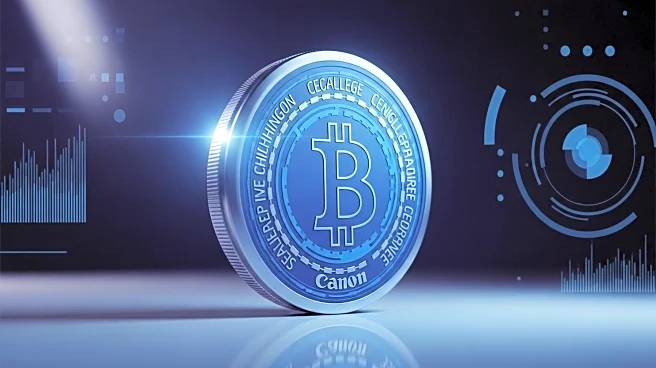What's Happening?
Hyperliquid has introduced a new stablecoin, USDH, following a competitive bidding process that saw Native Markets secure the ticker. The decision was made through Hyperliquid's first major on-chain governance vote, with Native Markets receiving nearly 70% of validator votes. This development marks a significant move in the stablecoin market, as USDH aims to compete with Circle's USD Coin (USDC), which currently holds a substantial $6 billion in reserves on the platform. Despite the competition, Hyperliquid has assured that USDC and other stablecoins will continue to be supported, provided they meet certain requirements such as a strong peg to $1 and sufficient liquidity depth.
Why It's Important?
The launch of USDH represents a potential shift in the stablecoin landscape, challenging the dominance of USDC. This could lead to increased competition and innovation within the sector, potentially benefiting users through improved services and lower fees. However, it also raises questions about governance and fairness in the selection process, as critics have voiced concerns about the transparency of the decision-making. The introduction of USDH may impact Circle's market position, as evidenced by a notable decline in its stock value since the announcement.
What's Next?
As USDH begins its rollout, stakeholders will be closely monitoring its adoption and performance against USDC. Native Markets plans to start with a testing phase for mints and redeems, followed by the opening of the USDH/USDC spot order book. The broader implications for the stablecoin market will depend on how well USDH can establish itself and whether it can attract significant liquidity and user base. Additionally, the controversy surrounding the selection process may prompt discussions on improving governance mechanisms within Hyperliquid.
Beyond the Headlines
The introduction of USDH could have long-term implications for the stablecoin market, potentially influencing regulatory perspectives and industry standards. As stablecoins become more integral to financial systems, ensuring fair governance and transparency in their management will be crucial. The outcome of this launch may also affect investor confidence and the strategic decisions of other stablecoin issuers.










